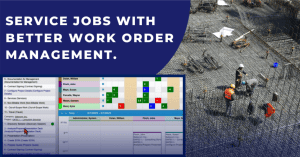By Mark Engelberg, TimeLinx Software
Intro:
Every project faces constraints, and how you manage them determines its success. These constraints form the foundation of the triple constraint model, also known as the Iron Triangle. The Iron Triangle consists of three interdependent factors: Scope, Time and Cost. These elements must be continuously balanced to maintain project quality. If any constraint shifts, the others are affected, and project quality can suffer. Sacrificing one constraint often leads to issues like scope creep or misaligned schedules.
The right Project and Service Management (PSM) software helps keep the Iron Triangle in balance. Such software provides real-time insights into scope, time and cost, offers project timeline tracking, and supports risk management. Today’s need for agility often means stretching the Triangle’s sides while still maintaining quality. Project managers can leverage data from these tools to minimize trade offs and keep the management triangle visible throughout the project lifecycle.
What is the Triangle?
Definitions:
Scope is a precise, written description of your project’s deliverables. A vague scope makes it difficult to deliver work and reach agreement with stakeholders about progress and completion. A well-defined scope helps prevent scope creep and keeps constraints clear. Even if you deliver the agreed scope, if it takes longer than planned, your customer may not be satisfied. This leads to the second constraint:
Time (or Schedule) is set during planning and estimates how long the work will take. It’s based on the number and complexity of tasks, required resources and anticipated obstacles. You set a delivery date for your customer, making timeline management a core part of your project plan.
When customers request additional work, deliverables change, and the time to deliver will likely increase. This is manageable if the customer agrees and you have project management software that can re-align resources in real time. Customers expect to pay for additional work, and you negotiate the amount. However, if the scope was not clearly defined at the outset, disagreements may arise over what constitutes additional work and who pays for it. This brings us to the third constraint:
Cost (or Budget) reflects the resources required to deliver the project. More time means more manpower, more hours or higher-cost resources with specialized skills. These costs must be negotiated with the customer. Without agreement, your project is at risk, as someone will need to absorb the difference. Effective planning, budget oversight and alignment of cost, time and scope are critical to project success.
How Does the Triangle Work, and how does PSM software play a part?
Your software must allow you to measure all three constraints in real time. Any project management solution should track changes in scope, cost and time concurrently, with features like time tracking and integrated scheduling. These factors are tightly connected: when you build your Scope of Work (SOW), you estimate the time required by people with specific skills, which determines your costs. This forms the basis of the triple constraint framework.
There are two versions of the Iron Triangle: one with Quality as a factor, and one with Scope. Using Quality as a constraint is rarely practical, as reducing quality is not desirable. However, changes in any constraint affect the others, and quality is impacted if you can’t keep all constraints balanced. This is the essence of triple constraint theory—time, cost and scope are interlinked.
When one factor changes, the other two must adjust to maintain equilibrium. Managing these trade offs is a core responsibility of project managers.
Project and Service Management software should track each constraint in real time. If costs rise or tasks take longer than scheduled, you need immediate visibility to manage expectations and respond with agility. Scope changes—intentional or not—affect all constraints except quality, which should remain unchanged. Constraints must be updated as the project progresses. Staying on top of these changes and ensuring all stakeholders are informed enables your team to implement agility and manage triple constraint variables with a well-informed plan.

Stretching the Iron Triangle and being Agile
While any break in the Iron Triangle’s factors can lead to project failure, the Triangle can be stretched. Agility is essential in today’s enterprise environment. Changing scope, cost or time on the fly is possible with effective management, provided quality remains constant. To achieve this, you must track every update across every project aspect. Some believe the Triangle is outdated and incompatible with modern agile practices, but it can be reframed for today’s requirements. A flexible, agile PSM solution allows your organization to adapt to changing timelines and scope while maintaining a balanced budget.
Conclusion:
The Iron Triangle remains relevant in today’s corporate environment, though it requires some adjustments. Executive sponsorship or leadership is a key factor in project success and maintaining the Triangle’s balance. Successful project managers measure every aspect of a project, including individual contributions. Individuals ultimately determine whether a project succeeds or fails. The best way to monitor project success at both the team and individual levels—while maintaining agility and the Triangle’s balance—is with a robust, integrated PSM solution. Such software supports project triangle fundamentals, addresses scope details and manages the triple constraint with clarity.




